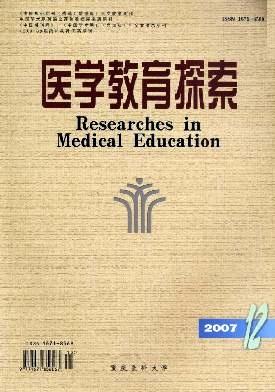Flipped classroom teaching method based on micro-lecture in bedside teaching of standardized training in pediatric residents
引用次数: 0
Abstract
Objective To explore the effect of flipped classroom teaching method based on micro-lecture in bedside teaching of standardized training in pediatric residents. Method s A total of 30 residents in pediatric rotation were selected as subjects, with 15 subjects in each group. The students in the experimental group carried out the bedside teaching of "flipped classroom based on micro-lectures", while the students in the control group carried out traditional teaching rounds. The bedside teaching of the two groups were conducted every two weeks, and the same cases were selected with the same instructors. Both groups completed the quizzes before the bedside teaching. After six months' training, the difference of training effect between the two groups was compared through the examination (case analysis and clinical skills). Result s The scores of the quizzes in the experimental group were significantly higher than those in the control group (P<0.05). The scores of case analysis and clinical skills in the experimental group were significantly higher than those in the control group (P<0.05), and logical thinking and doctor-patient communication abilities in the experimental group were significantly better than those in the control group(P<0.05). The results of the questionnaire survey in the experimental group showed that the students believed that the new bedside teaching method could promote learning initiative, help to inspire clinical thinking and improve doctor-patient communication abilities. Conclusion Flipped classroom teaching method based on micro-lecture in bedside teaching of pediatric residents not only strengthens their basic theoretical knowledge, but also improves their clinical skills, especially in establishing correct clinical thinking and mastering doctor-patient communication skills. Key words: Micro-lecture; Flipped classroom; Standardized training for residents基于微讲座的翻转课堂教学法在儿科住院医师规范化培训床旁教学中的应用
目的探讨基于微讲座的翻转课堂教学法在儿科住院医师规范化培训床边教学中的应用效果。方法选取30名儿科轮转住院医师作为研究对象,每组15名。实验组学生进行“基于微讲座的翻转课堂”的床边教学,对照组学生进行传统的轮式教学。两组床边教学每两周进行一次,选取相同病例,由相同的指导教师进行。两组在床边教学前都完成了小测验。培训半年后,通过考核(病例分析、临床技能考核)比较两组培训效果的差异。结果实验组学生的测验成绩显著高于对照组(P<0.05)。实验组病例分析和临床技能得分显著高于对照组(P<0.05),逻辑思维和医患沟通能力显著优于对照组(P<0.05)。实验组的问卷调查结果显示,学生认为新的床边教学方法可以提高学习主动性,有助于激发临床思维,提高医患沟通能力。结论基于微讲座的翻转课堂教学法在儿科住院医师床边教学中不仅强化了他们的基础理论知识,而且提高了他们的临床技能,尤其是在建立正确的临床思维和掌握医患沟通技巧方面。关键词:微讲座;翻转课堂;住院医师规范化培训
本文章由计算机程序翻译,如有差异,请以英文原文为准。
求助全文
约1分钟内获得全文
求助全文

 求助内容:
求助内容: 应助结果提醒方式:
应助结果提醒方式:


